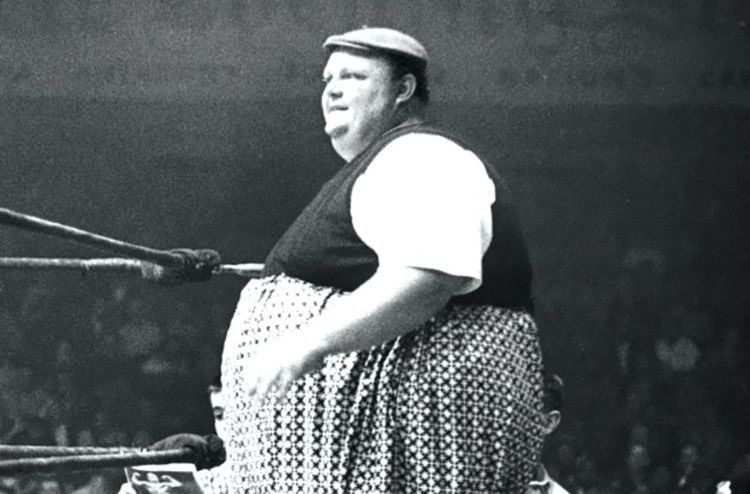Meet the 900-Pound Giant: The Heaviest Wrestler WWE Fans Never Knew Existed
- 50/50innertainment

- Sep 10
- 3 min read

When you think of giants in wrestling, names like The Big Show, Andre the Giant, or even Yokozuna might come to mind. But long before those iconic super heavyweights stepped into the ring, one man reigned as the heaviest professional wrestler in history — Happy Humphrey. Weighing in at a staggering 900 pounds, Happy Humphrey was a walking phenomenon. Yet, despite his incredible size and headline-grabbing presence, most modern WWE fans have never even heard his name. Let’s take a dive into the remarkable, forgotten story of the man who literally broke the scales.
Who Was Happy Humphrey?
Born William J. Cobb in 1926 in Macon, Georgia, Humphrey’s massive size wasn’t just a gimmick — it was real. At his peak, he tipped the scales at over 900 lbs, making him the heaviest verified professional wrestler in history.
He began his wrestling career in the 1950s, a time when wrestling promotions thrived on regional circuits and characters with extreme physical features were big box office draws. Humphrey’s sheer size made him an instant spectacle — and a natural "heel" (villain) in the ring.

More Than Just Size: A Showman in the Ring
Though his movement was understandably limited, Humphrey made up for it with charisma and clever showmanship. Promoters booked him as an "unstoppable force," often putting him in "freak show" matchups against smaller, quicker opponents.
One of his most famous feuds was with a young Haystacks Calhoun, another massive wrestler who weighed over 600 lbs. These "battle of the giants" style matches drew huge crowds throughout the Southern U.S., cementing Humphrey’s legacy as a box office attraction.
Life Outside the Ring — And Inside a Hospital
Unfortunately, Happy Humphrey’s size wasn’t just an act — it came with serious health consequences. By the early 1960s, his weight had become life-threatening. In a bold and public move, Humphrey volunteered to participate in a medical weight loss program at the Medical College of Georgia.
Doctors put him on a strict calorie-controlled diet and monitored his progress. Over a span of two years, Humphrey lost more than 570 pounds, dropping down to around 300 lbs — a dramatic transformation that made national headlines.
This makes Happy Humphrey not just the heaviest wrestler of all time, but also one of the earliest public cases of medical weight loss treatment for extreme obesity.
Why WWE Fans Don’t Know Him
You might be wondering why Happy Humphrey isn’t celebrated in WWE history books or Hall of Fame reels. The simple reason is timing.
Humphrey's career ended long before the formation of what we now know as WWE (formerly WWF). He never competed under the Vince McMahon empire and wasn’t part of the television-era boom that made stars like Hulk Hogan, The Undertaker, or The Rock household names.
Still, his influence can be seen in how wrestling embraced super heavyweights as spectacle, from Andre the Giant to Braun Strowman. Without Humphrey breaking ground — and ring ropes — there might not have been a place for the giants who followed.

Legacy of a Forgotten Giant
Though his name has faded with time, Happy Humphrey remains a true pioneer in the world of wrestling. He pushed the boundaries of what the human body could endure and entertained thousands despite physical challenges most couldn’t imagine.
In a world where larger-than-life personas dominate the wrestling stage, Happy Humphrey was truly larger than life — both literally and figuratively.
So next time you see a super heavyweight in the ring, remember the 900-pound man who did it first.
Fast Facts About Happy Humphrey
Real Name: William J. Cobb
Weight: Up to 900 lbs
Height: Approx. 6'1"
Career Peak: 1950s–1960s
Notable Feuds: Haystacks Calhoun
Famous For: Being the heaviest wrestler in history
Post-Wrestling: Lost 570 lbs in medical weight loss study
Final Thoughts
Happy Humphrey’s story is one of extremes — extreme size, extreme struggle, and extreme transformation. While he's not a household name in today’s wrestling world, his impact on the industry and the public's perception of obesity made him a historical figure worth remembering

Comments